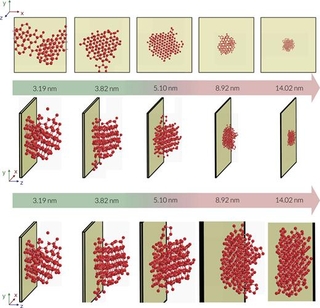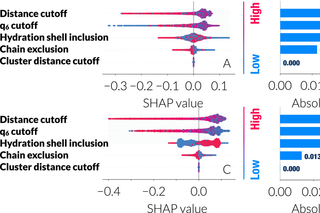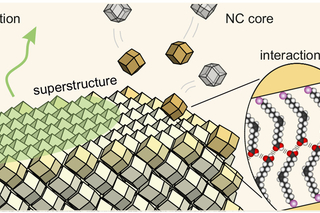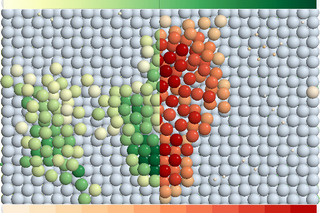
Representative critical crystalline nuclei from nucleation on five INPs of different size s depicted from two different angles.
Crystallization is a first-order phase transition that is ubiquitous in the world around us. Examples include ice formation and its importance in cloud microphysics, crystallization of silicon and other Group IV elements used in electronics and solar cell industries, formation of molecular crystals of pharmaceuticals of organic semiconductors, clathrate hydrate formation in oil pipelines, and polymer crystallization, etc.
Crystallization can be favorable or problematic. For instance, it is usually desirable to form crystals from solutions of pharmaceuticals, while the formation of amyloid fibrils in the brain is linked to Alzheimer’s disease. Understanding crystallization is therefore crucial for developing strategies for its promotion, inhibition and control. Unfortunately, despite its omnipresence, the microscopic details underlying crystal formation are far from fully understood, and elucidating them is an active area of research.
In our lab, we use molecular simulations coupled with advanced sampling techniques like forward-flux sampling to explore the mechanism and rate of crystal nucleation, which is the rate-limiting step for crystallization in a wide-variety of situations with low to moderate thermodynamic driving force. Particularly, we are interested in understanding nucleation in non-classical environments such as in the vicinity of fluid-fluid interfaces (relevant to atmospheric freezing) or on chemically and topographically non-uniform surfaces, etc. We also develop rigorous heuristics to quantify and avoid artifacts in our nucleation simulations such as finite-size effects that arise as a result of simulating small systems. Our work is aimed at broadening the understanding of both homogeneous and heterogeneous nucleation, and developing robust heuristics and tools that ensure efficient, fast and correct simulations.
Related Work
-
41. The impact of hydration shell inclusion and chain exclusion in the efficacy of reaction coordinates for homogeneous and heterogeneous ice nucleation.
Sinaeian K., Haji-Akbari A. J. Chem. Phys. 162, 164102 (2025)
-
38. Nanocrystal Assemblies: Current Advances and Open Problems
Bassani C.L., van Anders G., Banin U., Baranov D., Chen Q., Dijkstra M., Dimitriyev M.S., Efrati E., Faraudo J., Gang O., Gaston N., Golestanian R., G
-
34. Divergence among Local Structure, Dynamics, and Nucleation Outcome in Heterogeneous Nucleation of Close-Packed Crystals
Domingues T. S, Hussain S., Haji-Akbari, A. J. Phys. Chem. Lett. (2024) 15, 5, 1279–1287.


